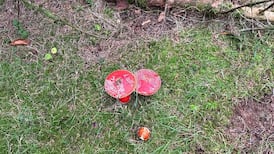Limerick City and County Council signed off on a €10 million plan by Irish Cement which would allow the company to burn up to 115 types of hazardous material, including "animal tissue waste", it was revealed on Thursday at a Bord Pleanála oral hearing.
The council granted planning permission last March, for Irish Cement to burn "hazardous" substances, including "end of life tyres", as fuel at its plant in Castlemungret, Co Limerick, provided it adhered to strict conditions.
Senior planning executive Stephane Duclot said prior to granting the application it liaised with officials at the Southern Waste Management Office, Limerick, who recommended a number of strict conditions be imposed.
One of the conditions, referred to as “condition 12”, recommended planning approval be subject to agreement that no unprocessed waste would arrive on site, and there would be no processing of the waste on the site.
The condition noted any waste arriving at the plant had to be “ready for use” as fuel in the plant’s kiln to avoid any potential additional residue waste arising.
Irish Cement stated a number of times it would continue to operate a cement factory and it was not proposing to change into an incinerator.
Opposing the plans, Derek O’Dwyer, Limerick Against Pollution (LAP), said a list of waste materials passed by the council for use made for “shocking reading”.
Red mud
He said some of these included “surprising descriptions” such as “animal tissue waste”; “agro chemical waste containing hazardous substances”; and “red mud from alumina production”.
Other examples on the list included “animal faeces, urine, and manure, (including spoiled straw), effluent, collected separately and treated off-site”.
Mr O'Dwyer said: "It's my sincere hope that when An Bord Pleanála revisits this case it takes a more robust view of the risks associated with the hazardous substances that are proposed to be used in Irish Cement's kiln. I am shocked."
Earlier, Dr Gordon Reid, a retired senior lecturer in physiology at UCC with 30 years' experience who provided a detailed submission on behalf of LAP, claimed Irish Cement had not provided the council with enough information in a risk-assessment report requested by the council prior to planning approval.
Dr Reid claimed some of the data provided by the company was “absolutely meaningless”, and that information relating to the “tolerable daily intake of dioxins, furans and dioxin like polychlorinated biphenyls (PCBs)…falls short of the information requested, and is inadequate”.
Irish Cement defended the analysis, and said it had adhered to and was bound by legislative conditions.
Submissions
Following the nine-hour Thursday hearing, local businessman and well-known horse owner JP McManus, who was in attendance for the third consecutive day, described the various submissions as “interesting”.
Ireland and Munster rugby legend Paul O'Connell, who is associated with a number of projects involving Mr McManus, also attended.
"It's hard not to be worried about it. I'm living in Annacotty, in Limerick…I'm just trying to find out some information," Mr O'Connell said, speaking during a break in proceedings.
In her submission opposing the plans, Claire Keating, chairwoman of Sli na Manach Residents' Association in Mungret, located about 500m from the Castlemungret plant, told the hearing: "We find ourselves forced to monitor dust emissions, write complaints, challenge denials, live with concerns over increased pulmonary risk and suffer excessive noise levels at night-time."
Fianna Fáil councillor James Collins, opposing the plan, told the hearing that in his and other councillors' opinions the granting of the planning permission was "not a balanced decision".
He said, in a further move to oppose the plan, councillors were currently discussing a motion to ban all incineration of toxic waste in Limerick.
However, it’s understood An Bord Pleanála would not be bound by this even if the motion was passed by councillors.
Poor data
On Wednesday, environmental consultant Jack O’Sullivan, on behalf of Limerick Against Pollution, told the hearing he had particular concerns about the use of whole “end-of-life” tyres in the kiln as disposing of used tyres was unregulated in Ireland and elsewhere. There was poor data about how many were in circulation, and a likelihood supplies would have to be imported. Re-using tyres was much more preferable than the toxins they inevitably generate when burned.
“The planning application by Irish Cement to burn large quantities of end-of-life tyres and other potentially reusable or recyclable materials...is counter-productive and unnecessary, and in conflict with EU and Government policy on resource management,” he said.
In addition, the company had not given adequate consideration to the way in which waste materials, including hazardous and toxic materials, would be handled at the proposed facility , Mr O’Sullivan said.
The oral hearing, which began last Tuesday, continues Friday.









